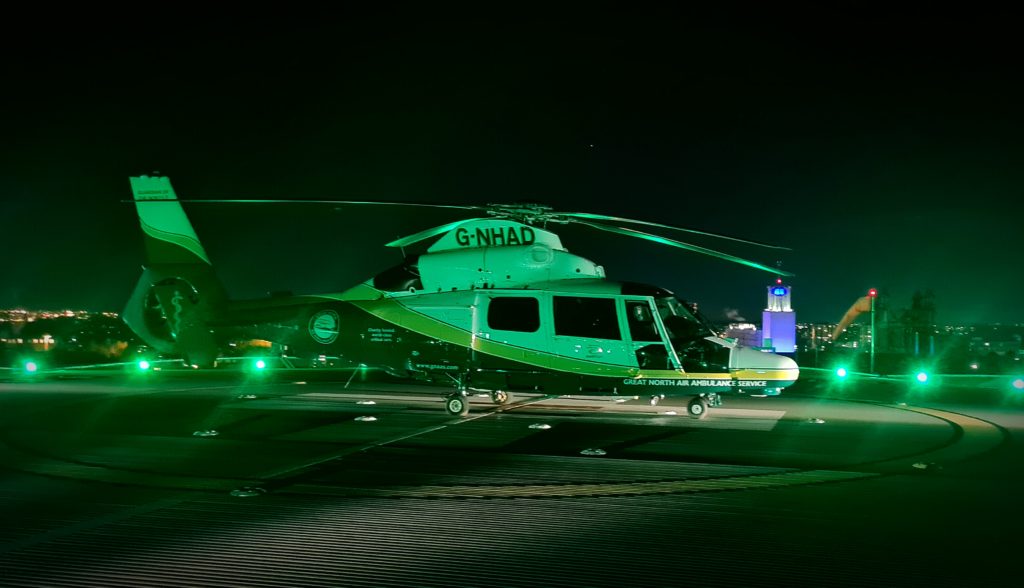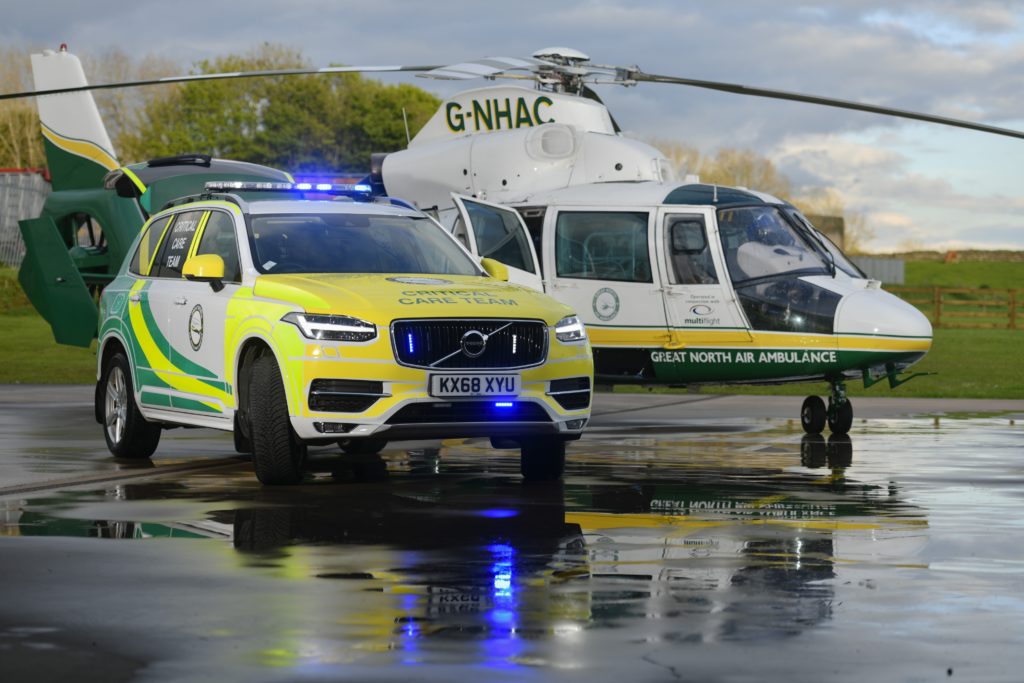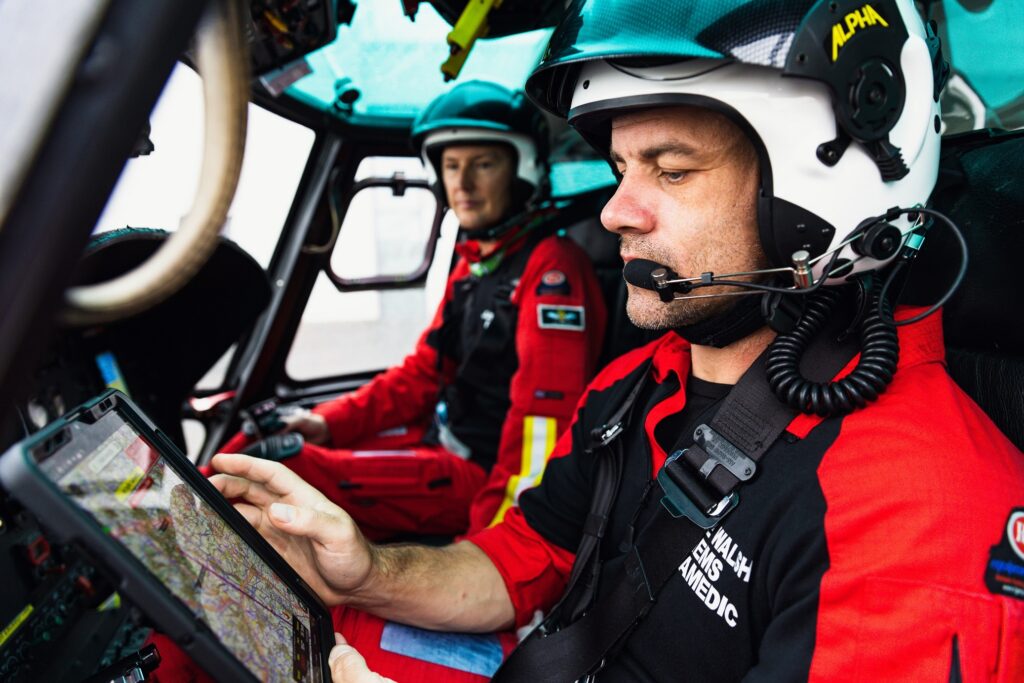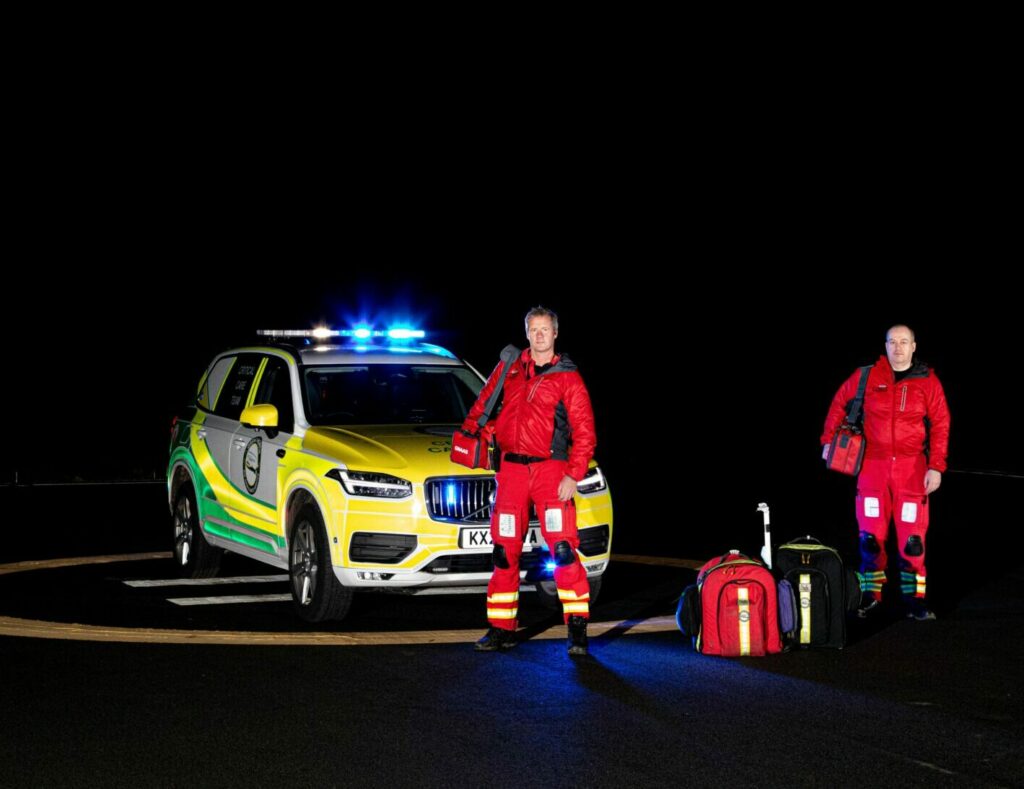During daylight hours our helicopters are a familar sight in the sky, however, did you know there are occasions when they can’t fly.
During these times, we have a fleet of rapid response vehicles that our paramedic and doctor teams can respond in, so we can still be there for you when you need us most. Here we explain when our helicopters are unable to fly:
Once the sun sets
Our helicopter can fly at night, but can only land on a well-lit, recognised helipad, otherwise overhead wires and other hazards can be impossible to spot. This is why our crew use the rapid response vehicles every night.


Very high wind
We can fly in high wind, but the trouble comes during starting and stopping when the blades aren’t up to full speed. However, it’s only when reaching wind speeds of gale force 10 that we worry.
Low cloud
Our pilots need 500 feet of clearance between the ground and the clouds. Overhead lines, wind turbines etc. can be hidden in the dense cloud.
Thunderstorms
Strong changeable gusts of wind occur in storms that can impact the aircraft and lightning can be dangerous to fly near (for obvious reasons). Luckily we can fly around any storms we meet.


Low temperatures
The issue with flying in low temperature comes from flying in clouds when it’s below 0°c. This is due to ice forming on the helicopter affecting visibility, weight and aerodynamics.
Freezing Rain
For the same reasons as above; freezing rain is extremely dangerous to fly in and can lead to a building up of ice on the helicopter.
Maintenance and servicing
Our three helicopters are managed and maintained by Multiflight, a company that manages the licensing, insurance, legal and accounting documents, flight planning, pilot allocation, aircraft cleaning, maintenance and engineering schedules.


All of our helicopters have a rigorous maintenance schedule and occasionally have to undergo a routine major service.
From the bolts to the rotorblades, every single component on each of our aircraft is closely monitored and must be repaired or replaced when it comes to the end of its allotted lifespan.
This lifespan is set by the manufacturer and is measured in calendar age, its number of flying hours and the number of cycles it has completed. These thresholds can be triggered at different times, depending on how busy the aircraft has been or the type and location of incidents it has attended. A component must be repaired or replaced when the first threshold is reached, regardless of the status of the other measurements. Each part has its own certification, right down to the bolts that keep the rotors attached.




